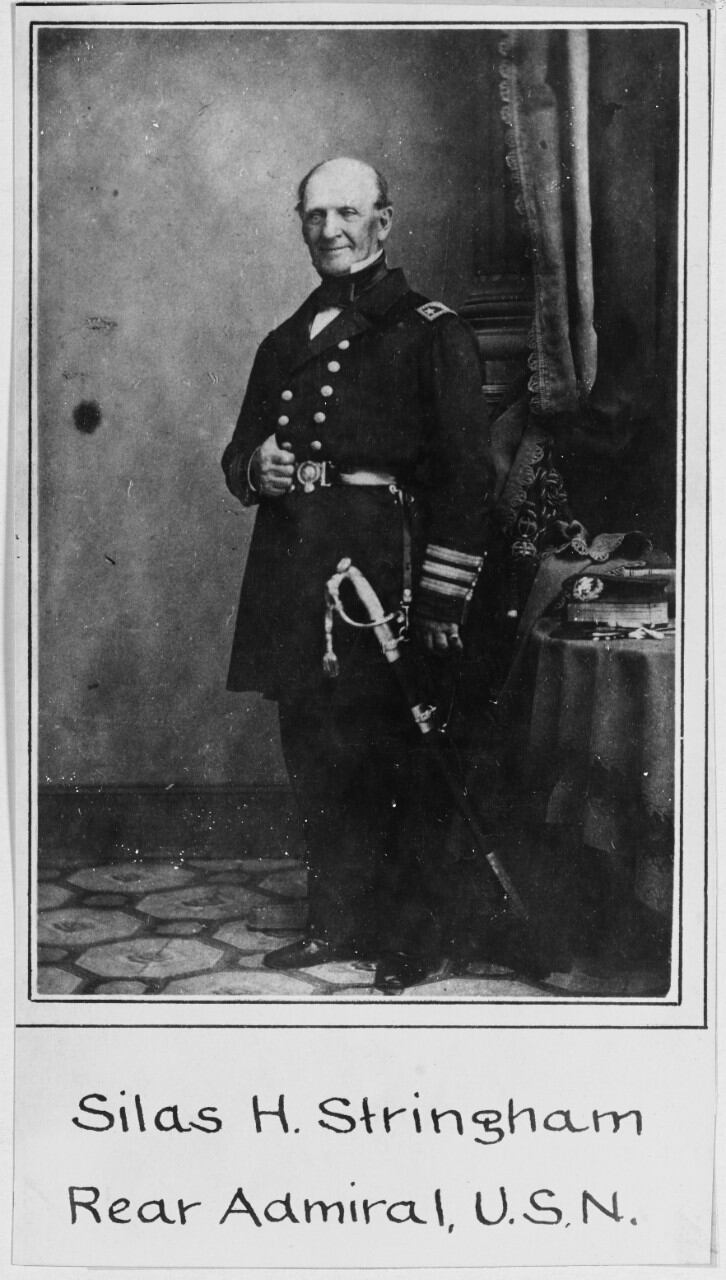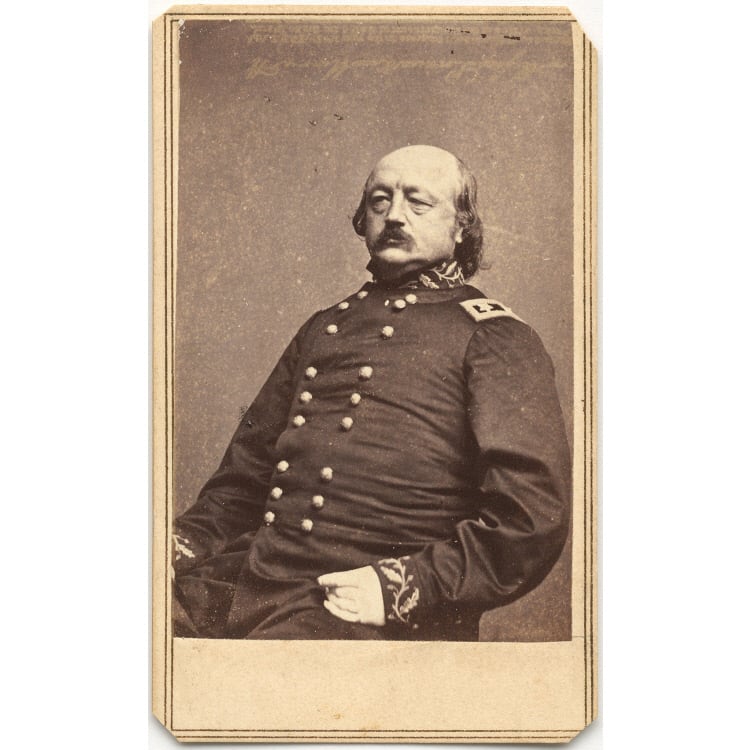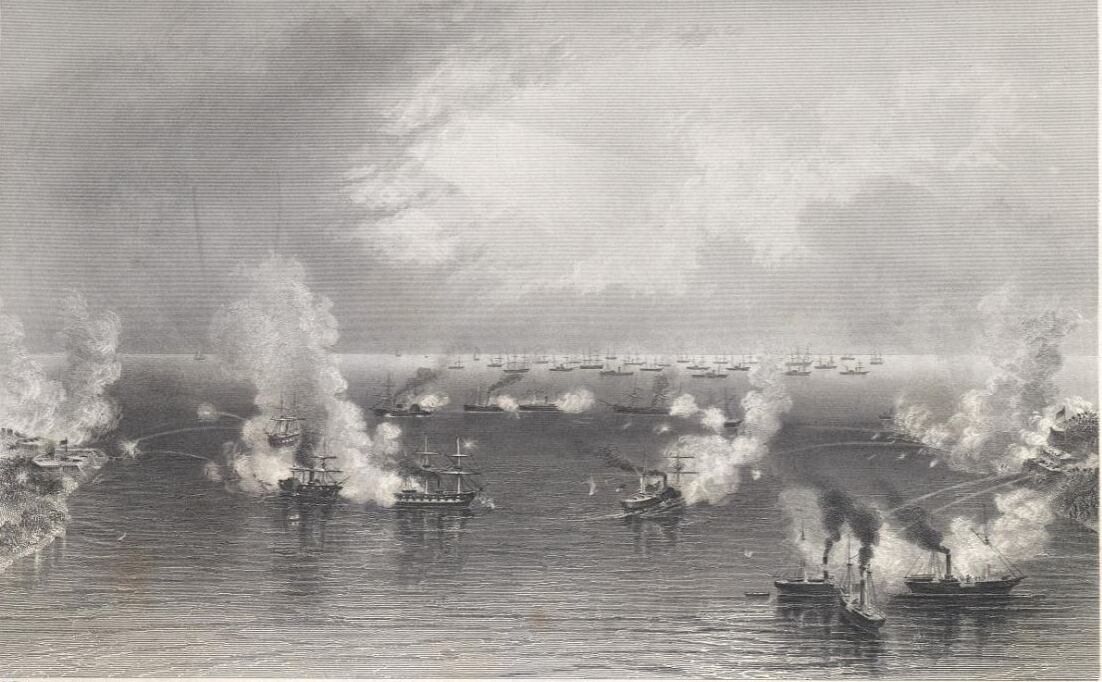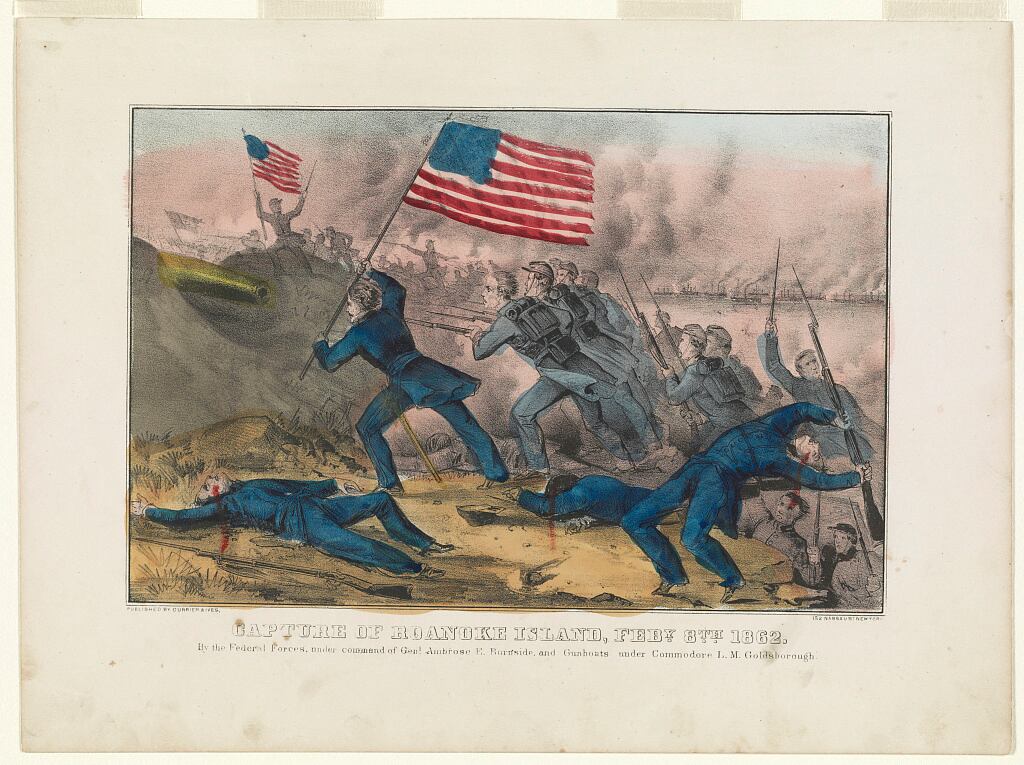The Hatteras Inlet, running between Ocracoke and Hatteras islands on North Carolina’s Outer Banks, has always provided oceangoing vessels with rare deep-water access to the state’s inland coastal towns, making it a frequented — and vulnerable — passage.
And in the first year of the Civil War, it was the scene of a brief but decisive battle that featured a number of “firsts” for the fledgling Union forces.
The natural shelter provided by the barrier islands, and the hellish winds and tides that guard the entrance, make it easy to see why the Hatteras Inlet was significant long before the Civil War.
Local pirate activity dates from the 16th century, and the legendary buccaneer Edward Teach, better known as Blackbeard, lost his vessel — and his life — in November 1718 to a British naval lieutenant, who reputedly decorated his bowsprit with the freebooter’s head. During the American Revolution, the inlet was a hunting ground and snug harbor for British privateers.
When the Civil War broke out, President Abraham Lincoln announced a blockade of all Southern ports and swiftly assembled a motley collection of vessels to barricade the Rebel coast.
But Confederates regularly evaded Union vessels, bringing in much-needed food and supplies. From their base of operations on the Outer Banks, Rebel raiders and privateers preyed on Union shipping and made life generally unpleasant for Yankee maritime commerce.
By late August 1861, raiders from Hatteras Inlet had captured some 16 merchant vessels.
RELATED

The Federal government took steps to deny Rebel access to the Atlantic from the inlet and gain control of Pamlico and Albemarle sounds — thereby locking up a major stretch of the North Carolina coast. To accomplish this, the North would mount the first combined land-and-sea operation of the war.
The Rebels, aware of both the value and the vulnerability of the inlet, had begun construction on Fort Clark and Fort Hatteras at Hatteras Island’s southern end and garrisoned the forts with some 700 troops of the 7th North Carolina.
In a shortsighted gesture of Southern hospitality, the locals allowed captured Union officers and their crews to wander Hatteras Island at will.
A number of them took note of the size, location and construction of the Rebel defenses. Upon release, they shared this intelligence with Federal authorities. When the Union forces came to mount their attack, it would be with a thorough knowledge of the resistance they would face.

In late August, five well-armed Union frigates and two gunboats under the command of Rear Adm. Silas Stringham sailed from Fort Monroe toward the inlet.
Neither Clark nor Hatteras had been completed, nor had many of the forts’ big guns been mounted.
In very short order, the Rebel defenses would prove stunningly inadequate.
Accompanying Stringham’s armada were troop transports containing some 900 infantrymen under Maj. Gen. Benjamin Butler.
A political appointee, the fat, bombastic Butler would soon prove a constant embarrassment to the Lincoln administration: a military incompetent, a bully of staggering proportions and a target of hatred and ridicule in the South.
But now, for a brief moment, he was poised to help Union forces to victory.
On Aug. 28, Butler led his men ashore and positioned them to the rear of the Rebel batteries on Hatteras.
Meanwhile, at around 10 a.m., Stringham’s squadron opened fire on Fort Clark with its long-range guns.
African Americans comprised one gun crew on board the flagship Minnesota; by firing on Fort Clark, they became the first black sailors of the war to be deployed against the Confederacy.
The Rebel garrison was taken completely by surprise. And when it did recover sufficiently to mount a defense, the ships were far enough offshore that the shot from the fort’s guns failed to come close.
The Rebels finally abandoned Fort Clark and ran for the comparative safety of the larger Fort Hatteras.
Butler’s men dashed in and assumed command of the empty earthworks.

At 8 a.m. the next day, the Union gunships turned their attention and their cannons to Fort Hatteras.
In a repeat of the previous day, the Rebel shot fell short; again, none of Stringham’s vessels was damaged, nor any sailors hurt.
The Rebels raised a white flag after 31/2 hours. Their commanding officer then met Butler’s men on the beach and surrendered the garrison.
The Hatteras Inlet was in Union hands, and all without the loss of a single Yankee life.
The Rebels would make a feeble attempt to retake the inlet in October, but the effort would come to nothing.
Union soldiers were now ensconced in the South, and the blow to Southern morale was heavy.
Although the Stringham-Butler expedition stopped short of seizing Pamlico and Albemarle sounds, its victory paved the way for future successful combined amphibious campaigns along the Southern coastline.
Less than three months later, Brig. Gen. Thomas W. Sherman and naval Capt. Samuel F. Du Pont shelled South Carolina’s coastal forts Walker and Beauregard and seized Port Royal, converting it to a Union base for support of the blockade.
In February 1862, Brig. Gen. Ambrose Burnside and Rear Adm. Louis Malesherbes Goldsborough launched an attack into the North Carolina sounds from the Hatteras Inlet, resulting in the capture of New Bern, Elizabeth City, Roanoke Island and Fort Macon, and giving the Union control of most of the North Carolina coast.

The battle for the Hatteras Inlet represented the first amphibious campaign — and the first combined operation — of the war; the first successful Union blockade; the first deployment of black sailors against the Rebels; the first of several engagements that wrested control of the Carolina coast from the Confederacy; and the first battle in which the U.S. Navy fired upon Southern-controlled objectives.
It was the first time Federal troops gained a foothold in the rebellious South.
Most important, it was the first real triumph for the North. After months of frustration and heartache, the North could point with pride to a battle won.
So vital was this early triumph that word was brought to a sleeping Lincoln in the middle of the night.
The president, on hearing the news, reportedly danced a jig in his nightshirt.

Scrimshander and historian Ron Soodalter is the author of Hanging Captain Gordon: The Life and Trial of an American Slave Trader. This article was published originally in the March 2012 issue of America’s Civil War. To subscribe, click here!





